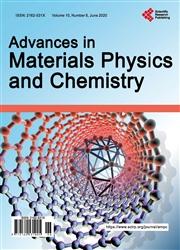Real and Fitted Spherical Indentations
引用次数: 1
Abstract
Spherical indentations that rely on original date are analyzed with the physically correct mathematical formula and its integration that take into account the radius over depth changes upon penetration. Linear plots, phase-transition onsets, energies, and pressures are algebraically obtained for germanium, zinc-oxide and gallium-nitride. There are low pressure phase-transitions that correspond to, or are not resolved by hydrostatic anvil onset pressures. This enables the attribution of polymorph structures, by comparing with known structures from pulsed laser deposition or molecular beam epitaxy and twinning. The spherical indentation is the easiest way for the synthesis and further characterization of polymorphs, now available in pure form under diamond calotte and in contact with their corresponding less dense polymorph. The unprecedented results and new possibilities require loading curves from experimental data. These are now easily distinguished from data that are “fitted” to make them concur with widely used unphysical Johnson’s formula for spheres (“P = (4/3)h3/2R1/2E∗”) not taking care of the R/h variation. Its challenge is indispensable, because its use involves “fitting equations” for making the data concur. These faked reports (no “experimental” data) provide dangerous false moduli and theories. The fitted spherical indentation reports with radii ranging from 4 to 250 μm are identified for PDMS, GaAs, Al, Si, SiC, MgO, and Steel. The detailed analysis reveals characteristic features.真实和拟合的球面压痕
使用物理正确的数学公式及其积分来分析依赖于原始日期的球形压痕,该公式考虑了穿透时半径随深度的变化。用代数方法得到了锗、氧化锌和氮化镓的线性图、相变起始点、能量和压力。存在与静水压砧座起始压力相对应或不由静水压砧台起始压力解决的低压相变。这使得能够通过与来自脉冲激光沉积或分子束外延和孪晶的已知结构进行比较来归属多晶型结构。球形压痕是合成和进一步表征多晶型物的最简单方法,现在可以在金刚石甘汞下以纯形式获得,并与相应的密度较低的多晶型体接触。前所未有的结果和新的可能性需要来自实验数据的加载曲线。现在,这些数据很容易与“拟合”的数据区分开来,使其与广泛使用的不考虑R/h变化的球体的非物理约翰逊公式(“P=(4/3)h3/2R1/2E*”)一致。它的挑战是不可或缺的,因为它的使用涉及到使数据一致的“拟合方程”。这些伪造的报告(没有“实验”数据)提供了危险的虚假模量和理论。PDMS、GaAs、Al、Si、SiC、MgO和钢的拟合球形压痕报告的半径范围为4至250μm。详细的分析揭示了其特点。
本文章由计算机程序翻译,如有差异,请以英文原文为准。
求助全文
约1分钟内获得全文
求助全文

 求助内容:
求助内容: 应助结果提醒方式:
应助结果提醒方式:


